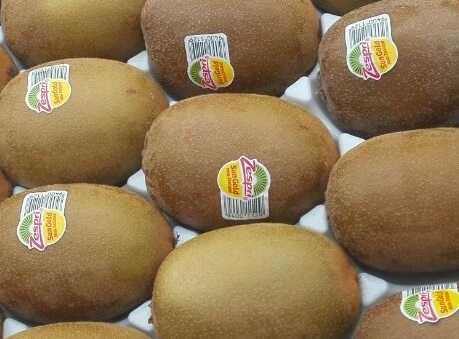NZ kiwifruit revenue to surge 135% by 2030, economists predict

In a study commissioned by marketer Zespri, economists from the University of Waikato have forecast a substantial rise in New Zealand's kiwifruit sales and the sector's contribution to gross domestic product (GDP) by 2030. 
Using production forecasts provided by the company, co-authors Frank Scrimgeour, Warren Hughes and Vijay Kumar have predicted annual revenue will hit NZ$10.6 billion by 2030, while the contribution to GDP will jump from NZ$2.6 billion to NZ$6.14 billion.
Estimates are based on the assumption that 2015-16 prices will remain.
The researchers were very positive about the flow-on effects of the kiwifruit sector as an "anchor industry" for regional areas like the Bay of Plenty and Northland, generating employment and also benefiting other industries as a result.
They also drew attention to the importance of new variety introductions.
"For instance if Gold 3 had not been available and rolled out following PSA and there had been no replacement available it is estimated the industry in 2030 would have been approximately 46% of our projections for 2030," the authors said.
"Industry profits would be even lower given the proportion of industry fixed costs having to be spread over a small volume of production, and as a result gold growers would have had fewer opportunities to recover their accumulated debts associated with PSA.
"The availability of Gold 3 led to less exits from the industry, fewer personal, community and social crises. Gold 3 provided a platform for sustained regional employment."
They mentioned that in the absence of a productive gold cultivar there would have also been the temptation for growers to over-produce green kiwifruit and stricter crop management protocols would have been required.
The study contemplates the economic contribution of G3 kiwifruit surpassing the traditional green Hayward kiwifruitby 2030, at NZ$6.7 billion compared to NZ$3.3 billion, along with NZ$638 million coming from other varieties.
In a release, Zespri general manager of innovation Carol Ward said Zespri commissioned the report to better understand the impact the kiwifruit industry has in the regions, for Maori and for New Zealand as a whole, as well the growth ahead.
"The New Zealand kiwifruit industry has a goal of increasing kiwifruit consumption around the world and is on track to more than double global sales to $4.5 billion by 2025, driven by this great new kiwifruit variety, Zespri SunGold," Ward said.
"We are grateful for the support of the New Zealand government over the past seven years through the MBIE Research Partnership Scheme, which has resulted in Zespri SunGold.
"Last season (2016/17) 46 million trays of Zespri SunGold were sold with an export value of $686 million, up 70 per cent from the previous year."
Ward said investment in this partnership - including NZ$13.5 million from the government and NZ$29.2 million from Zespri - showed the government's commitment to supporting the horticultural sector's aim to double its earnings to NZ$10 billion per annum by 2020.
In the release, Professor Frank Scrimgeour added the report quantified the contribution the kiwifruit industry and the new cultivar breeding programme made to the economies of Bay of Plenty, Northland and New Zealand.
“The regional growth projections are very strong: in Bay of Plenty, kiwifruit accounts for 10,762 full-time equivalent (FTE) jobs now and an additional 14,329 jobs by 2030, along with a 135 percent increase of GDP contribution to $2.04 billion," he said.
"Northland is set to increase by 506 jobs over the same period, with contribution to GDP set to increase 135 percent to $72 million.
“It was encouraging to see Maori are also set to benefit from kiwifruit’s growth, with grower revenue set to increase from $271 million to $638 million per year by 2030."
Professor Scrimgeour noted the kiwifruit industry is a leader in horticulture practice and international marketing, making it significant for the overall economy of New Zealand far beyond export receipts.
Plant & Food Research COO Dr. Dr Bruce Campbell said his team was thrilled to have contributed to the New Zealand economy in such a positive way.
"Breeding a new cultivar is complex work, linking deep science knowledge with understanding of the needs of both growers and consumers," Campbell said.
"The long-term commitment by both Zespri and the New Zealand Government in the kiwifruit breeding programme has allowed us to deliver a game-changing new kiwifruit, for the horticultural industry and the nation.
"This is a great example of a NZ Inc investment focused on creating value by delighting consumers."

















































